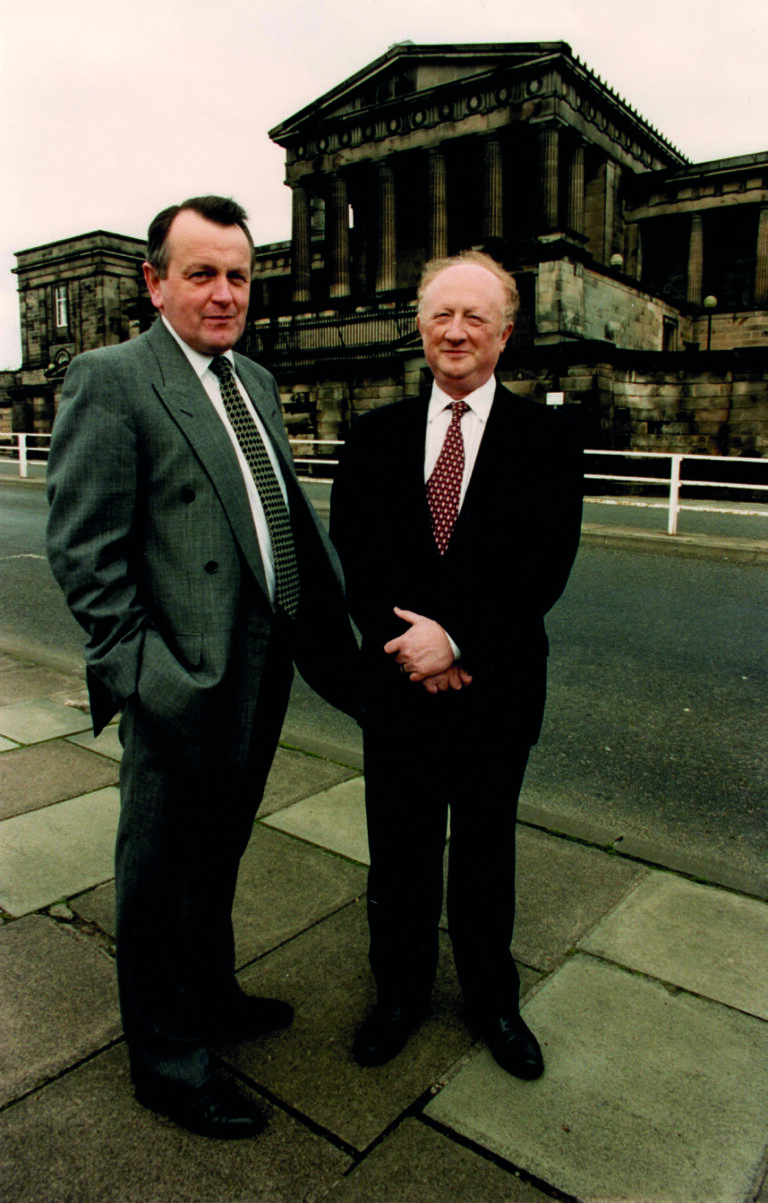Inevitably, however, the cycle of pay increase and subsequent decline continued after the strikes of the mid-1980s. By the time Ronnie Smith became EIS General Secretary, in 1995, pay was once more an issue for teachers, as were their working conditions. This time, however, support from outside the profession was not quite as forthcoming. The Scottish media had little sympathy for the EIS – overall, the media viewed trade unions as unwilling to move with the times. In the run-up to the 1997 election, in particular, the EIS was viewed as a bit of a drag on the necessary drive to modernisation.
After the election of Tony Blair’s New Labour – but before the establishment of the Scottish Parliament – a committee was set up under Professor Gavin McCrone, a former chief economic adviser at the Scottish Office.
The subsequent agreement – A Teaching Profession for the 21st Century – negotiated after the re-constitution of the Scottish Parliament and the formation of a Labour – Lib Dem Scottish Executive, became the template for Scottish education under a devolved administration and in many respects represented the positive outcomes possible through a collaborative rather than a confrontational approach.
The agreement offered teachers a 23 per cent pay rise over three years. The pay scale was simplified: where previously it had taken between 10 and 12 years to climb from the bottom to the top, it would now take only six years.
This unified pay scale also tackled non-contact time.
Previously, secondary teachers had 22.5 hours maximum contact time, while primary teachers had 25 hours. The new agreement set a maximum of 22.5 hours’ contact time across all sectors. It also saw the introduction of the Teacher Induction Scheme, which guaranteed probationer teachers a one year initial contract in school, the creation of Chartered Teacher posts for those wishing to focus on professional advancement of their skills without going into management, an entitlement to professional learning opportunities, and the widespread introduction of principal teacher posts in primary schools.
Ronnie Smith considers A Teaching Profession for the 21st Century to be the high-water mark of his career. “In theory, we created a whole new atmosphere in schools – much more trusting and professional,” he says. “Less high-handed, and much more collegiate working. Had it really been embraced and followed right through, I think it would have created the highest degree of professional autonomy, which personally I think is very important. Too often, the view of professionals is denigrated. McCrone strengthened the professional input.”
He added, “That [the deal] was struck in 2001 and brought 10 years of stability and peace and a much more positive atmosphere in schools. In terms of outcomes, that’s the big one. I was centrally involved in that negotiation – it went on right through the Christmas holidays and New Year and was a fairly fierce time. But it was a very important negotiation because in the run up to McCrone, the whole atmosphere in schools had become really very bad. Things had become very tense, and if we hadn’t reached that agreement in 2001 then I think we’d have been into a period of hard industrial action, like we had in mid 1980s, so I think it was an agreement that was not only good in itself, but actually its impact was far greater than most appreciate.

ACKNOWLEDGEMENTS:
Research, interviews and substantive writing:
Adi Bloom
Design and lay-out:
Stuart Cunningham and Paul Benzie
Additional writing and research:
EIS Comms Team and assorted staff members
Printed by:
Ivanhoe Caledonian, Seafield Edinburgh
Photography:
Graham Edwards, Mark Jackson, Elaine Livingston, Toby Long, Ian Marshall, Alan McCredie, Alan Richardson, Graham Riddell, Lenny Smith, Johnstone Syer, Alan Wylie


Thanks to the many former activists and officers who gave of their time to be interviewed and taken a stroll down memory lane. And of course a very special thanks to the EIS members who created this history through their activism and commitment to the cause of Scottish Education.
© 2022 The Educational Institute of Scotland